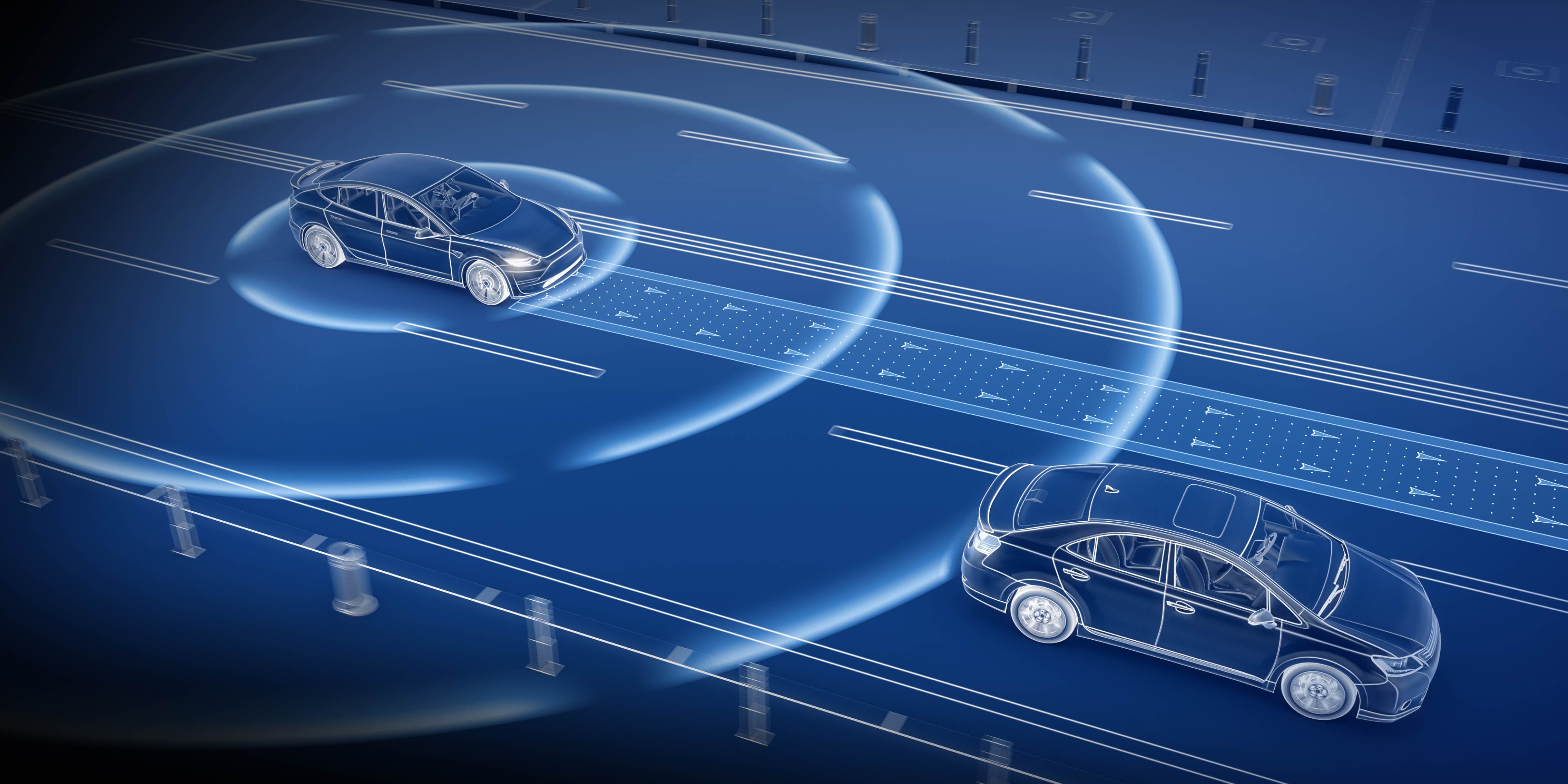
Dorian Derežić - 27/03/2024 | 8 min read
SpaceTime Advanced Driver Assistance Systems Automotive
In the constantly evolving realm of automotive technology, Advanced Driver Assistance Systems (ADAS) are an exciting frontier.

With a diverse array of features such as adaptive cruise control, automatic emergency braking, parking assistance, and lane-keeping assist, ADAS are actively transforming the dynamics of road safety and vehicular control.
Underpinning this evolution is the lifeblood of modern technology – data. The vast and complex landscape of data in the automotive industry, spanning everything from sensor input to environmental information, acts as the beating heart of ADAS. The richness of this data aids these systems in preemptively detecting potential hazards, guiding navigation, and even automating certain driving tasks.
But the mounting challenge in the automotive industry is how to harness, analyze, and leverage this torrent of data to effectively enhance ADAS functionalities. This challenge demands a powerful solution that can integrate diverse data sources and process large volumes of data in real-time.
That's where Mireo SpaceTime comes into play. As a robust platform engineered to enhance data integration and real-time analysis, SpaceTime is pioneering a new era of data optimization in ADAS.
Advanced Driver Assistance Systems, or ADAS, are a constellation of safety features ingrained in modern vehicles to augment safety and comfort for both drivers and passengers. ADAS encompasses a broad spectrum of functionalities, each crafted to mitigate different aspects of driving risks.
The systems that constitute ADAS could range from features like adaptive cruise control, which automatically adjusts the vehicle speed to maintain a safe distance from other vehicles, to automatic emergency braking systems that can detect impending collisions and act in real-time to mitigate the impact. Other features may include parking assistance, which simplifies the process of parking by offering automated guidance or even performing the task independently. Lane-keeping assist is yet another function that ensures the vehicle stays within its lane by detecting lane markings and making necessary corrections.
But the true essence of ADAS lies in its reliance on an extensive array of data, including input from sensors like radar, lidar, and cameras, vehicle telemetry data that provides information about the vehicle's performance, and environmental data that can give insights into road conditions and potential hazards. The systems process this data to respond to real-time conditions, ensuring their operations are accurate and reliable.
Yet, handling and analyzing the data necessary for the operation of ADAS can prove to be quite challenging. With the sheer volume, variety, and velocity of data streaming in from multiple sources, ADAS requires robust data management and analytics capabilities. As we continue to witness a surge in the adoption of connected and autonomous vehicles, these data challenges are expected to become even more complex and demanding.
The sophisticated capabilities of Mireo SpaceTime can significantly enhance the performance of Advanced Driver Assistance Systems (ADAS). Through its potent data integration and real-time analysis features, SpaceTime allows ADAS to operate with greater precision, proactivity, and adaptability, leading to an overall enhanced driving experience.
One of the key roles SpaceTime plays in optimizing ADAS performance is its ability to seamlessly integrate data from various sources. ADAS are typically fed data from a myriad of sensors embedded in the vehicle, including radar, LIDAR, cameras, ultrasonic sensors, and more.
These sensors provide data about the vehicle's surroundings, speed, acceleration, braking, and other critical parameters. Additionally, external data such as weather conditions, traffic information, and map data are also vital for the effective operation of ADAS.
SpaceTime is designed to handle this complex web of data, integrating it in a way that's consumable and actionable for ADAS.
SpaceTime's predictive capabilities add another layer of optimization to ADAS performance. By analyzing historical and real-time data, SpaceTime can help OEMs' existing data management systems which handle ADAS to make accurate predictions about various factors.
For example, predicting possible obstacles on the route based on the vehicle's speed, direction, and data on the surrounding environment. Such predictive insights can lead to preventive actions, like warning the driver or adjusting the vehicle's speed, to avoid potential issues.
This predictive power not only enhances safety but also improves the overall efficiency of the vehicle by optimizing route planning and driving behavior.
SpaceTime's ability to understand patterns in data enables it to deliver a personalized driving experience. By analyzing data over time, SpaceTime can identify specific preferences and habits of the driver. These insights can be used to customize various ADAS functionalities.
For instance, if a driver consistently maintains a particular distance from the vehicle in front, the adaptive cruise control system can automatically adjust to maintain this preferred distance.
This level of personalization leads to a more comfortable and intuitive driving experience, thereby enhancing user satisfaction.
Mireo SpaceTime allows for continuous learning, which is a critical factor in optimizing ADAS performance. As more data is collected and analyzed over time, the insights derived from this data can be used to update and refine the system. This means that the ADAS, powered by SpaceTime, can continually improve its performance based on real-world experiences.
For instance, if the system identifies that certain types of obstacles are consistently causing false warnings, it can learn from these instances and adjust its parameters to reduce such false positives in the future.
This continuous learning capability ensures that the ADAS remains efficient, reliable, and relevant in changing real-world conditions.
Finally, SpaceTime's role in optimizing ADAS extends to enhanced connectivity and functionality. By efficiently integrating and managing data from various sources, it allows different ADAS features to work together seamlessly.
For example, adaptive cruise control, lane-keeping assistance, and automatic emergency braking can work in tandem, sharing insights and responding collectively to ensure a safe and smooth drive. This interconnected functionality leads to a more cohesive and intuitive ADAS, thereby elevating the overall driving experience.
In these ways, Mireo SpaceTime plays a pivotal role in optimizing the performance of Advanced Driver Assistance Systems, enhancing their safety, efficiency, and user-centricity.

In the rapidly evolving automotive industry, the business benefits of implementing SpaceTime into Advanced Driver Assistance Systems (ADAS) are multifold. These benefits can provide a significant competitive advantage in a market driven by technological innovation and customer-centric solutions.
Safety is a paramount concern for automotive businesses. Enhanced accuracy and effectiveness of ADAS functionalities, driven by SpaceTime's robust data integration and real-time analysis, lead to improved safety. An effective ADAS reduces the risk of accidents, thereby aligning with the ethical responsibility of automotive companies to prioritize user safety.
Furthermore, safety performance directly impacts brand reputation and customer trust. Companies that can demonstrate their commitment to safety through effective, data-driven ADAS are likely to enjoy higher brand equity.
By facilitating a seamless and intuitive driving experience, SpaceTime-enhanced ADAS results in higher user satisfaction.
SpaceTime's ability to personalize ADAS functionalities, such as maintaining preferred distances and identifying common routes, improves user experience. This, in turn, increases customer loyalty and retention, which are critical for sustainable business growth in a competitive market.
In a crowded automotive market, differentiation is key to standing out. By employing Mireo SpaceTime to optimize ADAS functionalities, businesses can showcase a unique selling proposition.
A technologically superior, data-driven ADAS can be a strong selling point that distinguishes a brand from its competitors and resonates with tech-savvy, safety-conscious customers.
The integration of vast amounts of spatio-temporal data and real-time analytics capability of SpaceTime can also open up opportunities for new business models.
For instance, companies could leverage insights derived from ADAS data to offer value-added services such as personalized insurance plans based on driving behavior.
By accurately predicting potential hazards and effectively responding to changing conditions, SpaceTime-powered ADAS can help prevent expensive accidents and subsequent insurance claims.
Moreover, the system's ability to quickly detect and rectify anomalies reduces maintenance costs and downtime, further enhancing cost efficiency.

From a technical standpoint, Mireo SpaceTime introduces several powerful capabilities to Advanced Driver Assistance Systems.
SpaceTime's robust data management capability enables ADAS to handle and interpret a vast range of data from diverse sources. This capacity is particularly crucial given the high volume and velocity of data generated in automotive contexts. A system equipped with SpaceTime can efficiently process and manage this data, ensuring the smooth functioning of ADAS.
SpaceTime's real-time analysis capability enhances the proactive and predictive aspects of ADAS. By analyzing data as it streams in, ADAS can respond to potential hazards more quickly and accurately, improving overall system effectiveness.
The ability to integrate data from diverse sources, like real-time traffic data and environmental information, improves ADAS's situational awareness. This broader understanding allows the system to better anticipate potential challenges and adjust its functionalities accordingly.
Comprehensive data integration and analysis provided by SpaceTime also improve the system’s reliability. Continuous monitoring and analysis of various parameters ensure the system can promptly detect anomalies or malfunctions. Early detection allows for quicker resolution of potential issues, ensuring the longevity of system components.
…at a rapid pace, fueled by the continuous advancements in technology and the increasing availability of data. However, effectively leveraging this data to enhance ADAS functionalities is a complex and demanding challenge. This is where SpaceTime can make a significant difference.
By seamlessly integrating diverse data sources, facilitating real-time analysis, and enabling personalization, SpaceTime holds the potential to revolutionize ADAS. With its robust capabilities, it can enhance the safety, efficiency, and user experience provided by these systems.
In the broader context, the use of SpaceTime in ADAS can also deliver significant business and technical benefits for automotive manufacturers and service providers. From improving brand reputation and customer loyalty to enhancing system reliability and predictive capabilities, the advantages are manifold.
As we navigate the exciting path of automotive technology, it is clear that solutions like Mireo SpaceTime will be pivotal in driving the future of ADAS. Harnessing the power of data, we can anticipate a future where driving is not just safer and more efficient, but also more intuitive and personalized. The journey is just beginning, and the road ahead is full of potential.